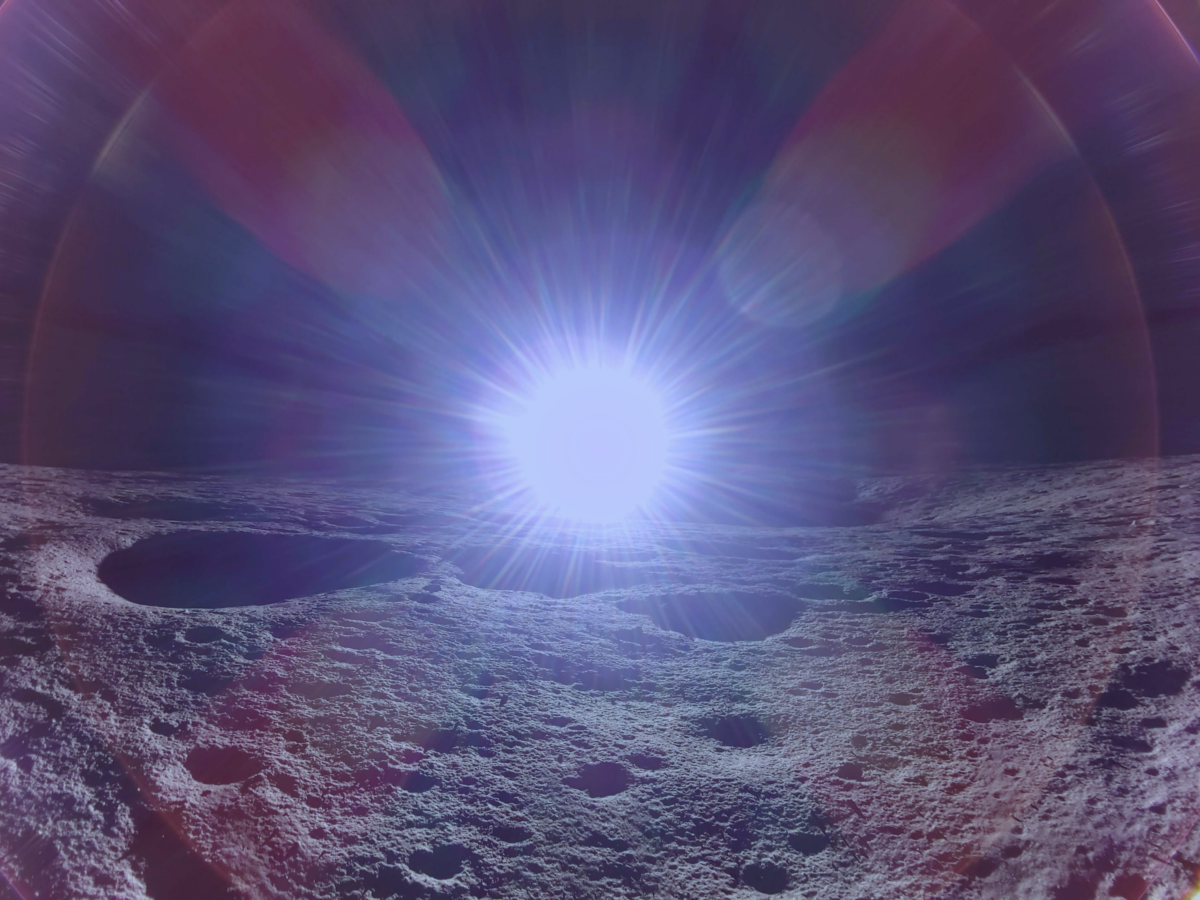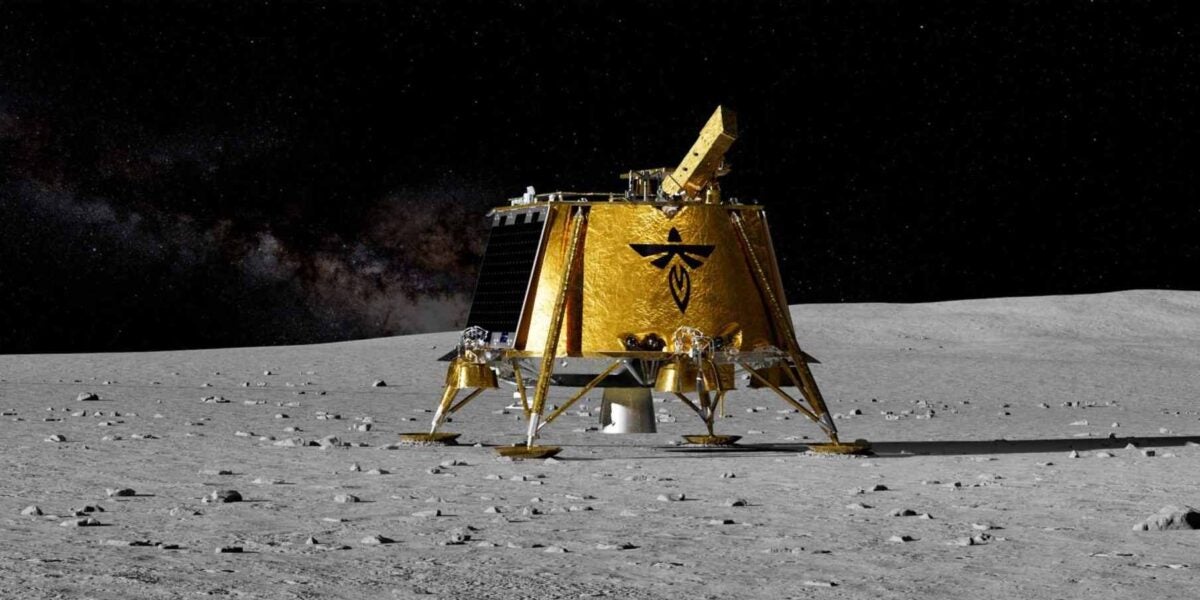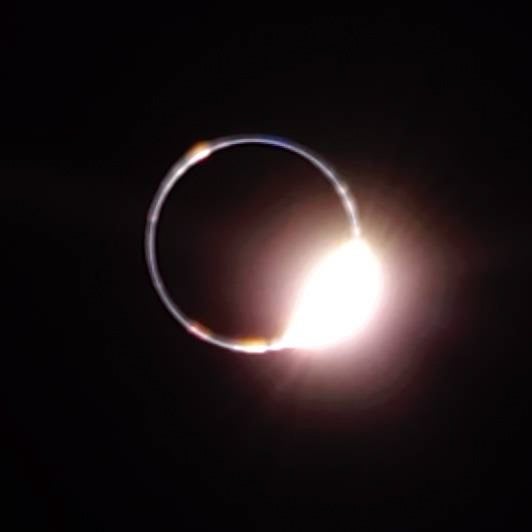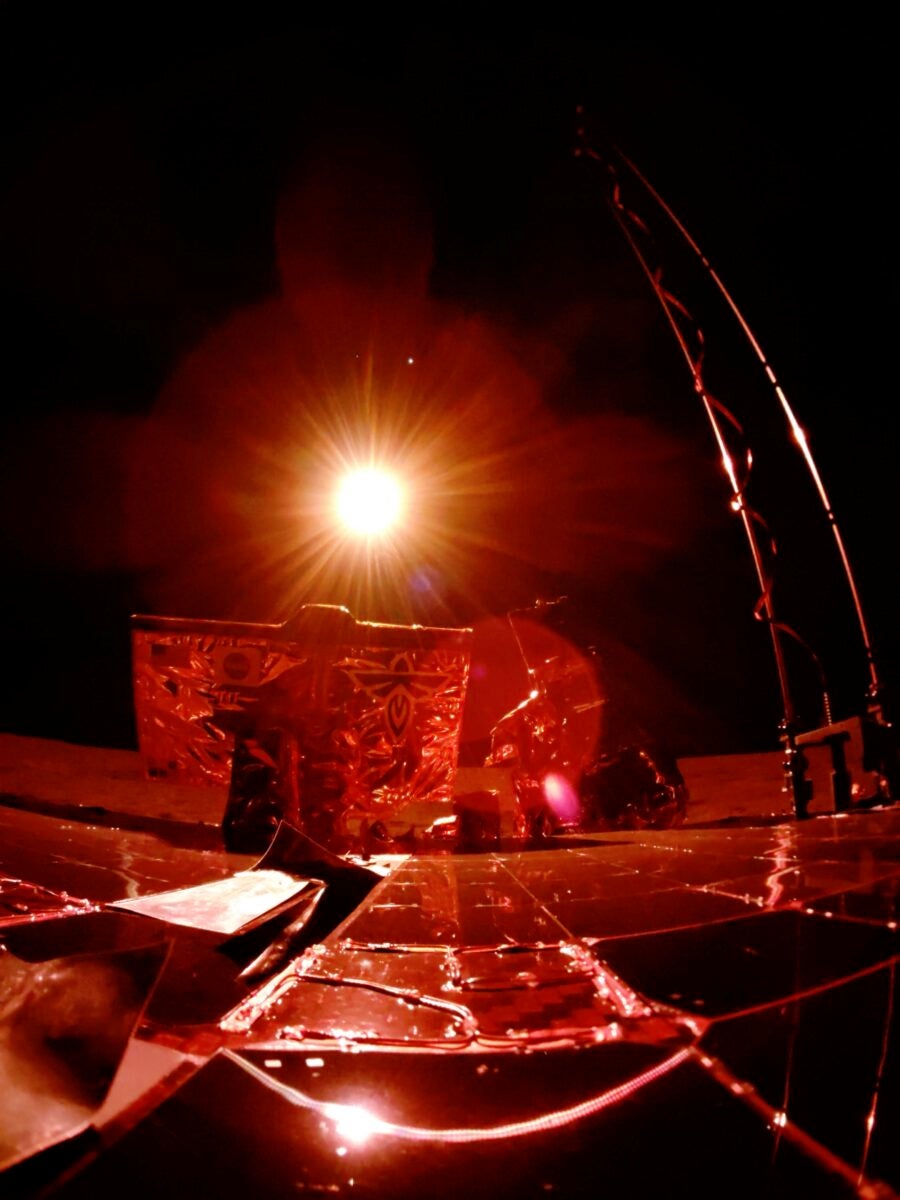Shortly after touchdown, Blue Ghost despatched again this gorgeous picture of its personal shadow with the Earth above the lunar horizon. Credit score: Firefly Aerospace
The Blue Ghost lunar lander completed floor operations on March 16, 2025, wrapping up a smashing success of a mission. Designed, constructed, and flown by Firefly Aerospace, based mostly close to Austin, Texas, Blue Ghost executed a flawless two-month-long voyage, capped by a surprising touchdown and two weeks of operations at Mare Crisium.
The success of the mission — named Ghost Riders within the Sky, presumably after the 1979 Johnny Money hit — is all of the extra spectacular because it was Firefly’s first try at touchdown on the Moon.
Latest historical past exhibits that even 55 years after Apollo, robotic lunar landings are nonetheless dangerous and troublesome. Simply two weeks in the past, Houston-based Intuitive Machines’ IM-2 mission resulted in a crash touchdown in a crater, the corporate’s second consecutive touchdown to go sideways. And landers from Russia, India, Israel, and Japan, have all crashed lately. (Then again, all 4 of China’s lunar landings have been an enormous success and subsequent Indian and Japanese landings have achieved higher outcomes.)
 Deep, harsh shadows created by the low solar elevation on the Mare Crisium touchdown web site previews the Solar-illumination challenges dealing with Artemis astronauts on the lunar south pole. Credit score: Firefly Aerospace
Deep, harsh shadows created by the low solar elevation on the Mare Crisium touchdown web site previews the Solar-illumination challenges dealing with Artemis astronauts on the lunar south pole. Credit score: Firefly Aerospace
An image-perfect touchdown
The gold-foil-covered 6.6-foot-high (2 meters) Blue Ghost lander spans 11.5 ft (3.5 m) throughout its touchdown legs and has a mass of three,344 kilos (1,517 kilograms) when totally fueled. For good luck, the lander’s body was personally signed by Apollo moonwalkers Buzz Aldrin and Harrison Schmidt.
The Ghost Riders within the Sky mission was managed by the Firefly Mission Operations Heart in Cedar Park, close to Austin, Texas. As a born and raised Texan, I requested Firefly Aerospace if Blue Ghost carried a Texas flag. Not on this mission, they replied, however future missions will accomplish that. The Lone Star flag might be among the many stars!
 An artist’s rendering exhibits the 6.6-foot-high (2 m) Blue Ghost lander on the lunar floor. Credit score: Firefly Aerospace
An artist’s rendering exhibits the 6.6-foot-high (2 m) Blue Ghost lander on the lunar floor. Credit score: Firefly Aerospace
After launching atop a Falcon 9 rocket on Jan. 15, 2025, Blue Ghost didn’t sprint on to the Moon just like the Apollo missions. As an alternative, it slowly spiraled out to the Moon in a lazy energy-saving trajectory earlier than dropping into lunar orbit on Feb. 13. Over the following 17 days, the craft slowly lowered itself right into a 62-mile-high (100 km) round orbit. At 2:34 a.m. Central Time, March 2, 2015, the lander carried out a picture-perfect autonomous touchdown close to Mons Latreille on japanese Mare Crisium. This 387-mile-wide (620 kilometers) lunar sea on the Man within the Moon’s proper cheek was not explored by NASA’s Surveyor and Apollo missions within the final century.
A touchdown video launched by Firefly confirmed Blue Ghost’s shadow turning into seen at an altitude of 91 ft (28 meters) because it slowly descended to the floor. Quickly, an astonishingly violent swirling mud storm whipped up by rocket exhaust become a horizon-obscuring haze. With stunning swiftness after the engine shut down, the mud settled rapidly within the airless lunar setting to disclose a stone hurled towards the horizon, splashing into the mud to the left of the lander’s shadow.
Upon landing, the primary of the ten lunar floor experiments was already a hit. NASA’s Langley Analysis Heart offered the Stereo Cameras for Lunar Plumes Floor Research (SCALPSS), a six-camera suite that recorded 3,000 frames of video finding out how the blast from rocket exhaust reacted with the free lunar mud and regolith. Even half a century after the Apollo crewed touchdown, the dynamics of rocket exhaust impinging on the regolith are usually not totally understood. The SCALPSS experiment is thus very important to help the deliberate Artemis crewed touchdown later this decade.
A scientific bounty
As a frequent customer to the Area Sciences Division at Southwest Analysis Institute (SwRI) in my hometown of San Antonio, I used to be significantly within the Lunar Magnetotelluric Sounder (LMS) experiment developed by SwRI. Magnetotellurics measures the pure variation in floor electrical and magnetic fields to find out how simply electrical energy flows by means of a planetary physique. Robert Grimm, the instrument’s principal investigator, famous in a press release that scientists have used magnetotellurics on Earth for greater than 50 years to seek for oil, water, and different sources, “as well as to understand geologic processes such as the growth of continents.”
RELATED: A go to to the cutting-edge Southwest Analysis Institute
A pleasant video launched by Firefly confirmed the deployment of LMS’s softball-sized magnetotelluric sensors. Like an outfielder hurling the game-winning ball towards residence plate, Blue Ghost heaved the sensors and their trailing electrical cable greater than 60 ft (18 m) away from the lander. The LMS experiment is predicted to offer insights into how the Moon cooled and the way its minerals have been distributed into separate areas and layers to a depth of 700 miles (1,120 km), or about two-thirds of the Moon’s radius.
A rising concern for future lunar exploration is the static-cling impact of lunar mud. The Electrodynamic Mud Defend experiment demonstrated {an electrical} approach to comb away lunar mud away from very important spacecraft parts.
One other fascinating experiment offered by the Italian Area Company was the Lunar GNSS Receiver Experiment (LuGRE) that investigated whether or not indicators from world navigation satellite tv for pc programs like GPS will also be used to navigate on the Moon. The LuGRE receiver was in a position to decide up indicators from the U.S.-run GPS in addition to Europe’s Galileo system each on the best way to the Moon and from the lunar floor. This exhibits that the identical satnav indicators that permit our smartphones to information us to the grocery retailer can even assist future lunar explorers navigate the Moon’s floor.
After the disappointing cancellation of the VIPER mission to the lunar south pole and the crash of the drill-carrying Intuitive Machines IM-2 mission, it was good to see Ghost Riders within the Sky carry out two experiments that touched and sampled the lunar floor. Quickly after touchdown, the Lunar PlanetVac (LPV) experiment ready by Honeybee Robotics efficiently demonstrated that regolith could be gathered right into a sample-return container utilizing pressurized nitrogen gasoline. And in a collaboration between Honeybee and Texas Tech College, the Lunar Instrumentation for Subsurface Thermal Exploration with Rapidity (LISTER) experiment efficiently drilled into the lunar regolith to position a temperature probe. Fascinating video of the drilling operation confirmed rock chips and sparks being ejected because the pneumatic drill bored into the floor.
That’s a wrap
4 days after touchdown, eight of the ten deliberate science targets had been met, and the experiments have been powered down to assist cool the lander below the 250-degree-Fahrenheit (121 levels Celsius) lunar noontime Solar. The experiments restarted later within the lunar day when the temperature dropped.
 The Solar reappearing from behind Earth throughout the March 14, 2025 lunar eclipse resembled a basic diamond-ring impact as seen from the Moon. Nevertheless, the mechanisms for this diamond ring are usually not precisely the identical. Earth seems a lot bigger within the Moon’s sky than the Moon does on Earth; the ring impact is brought on by daylight refracted across the planet by its ambiance. Credit score: Firefly Aerospace
The Solar reappearing from behind Earth throughout the March 14, 2025 lunar eclipse resembled a basic diamond-ring impact as seen from the Moon. Nevertheless, the mechanisms for this diamond ring are usually not precisely the identical. Earth seems a lot bigger within the Moon’s sky than the Moon does on Earth; the ring impact is brought on by daylight refracted across the planet by its ambiance. Credit score: Firefly Aerospace
An intriguing occasion that was not an official science goal was the March 14/15 whole lunar eclipse. As seen from the Blue Ghost lander, which was then working on Mare Crisium, this occasion was a complete photo voltaic eclipse. A video beaming from the Moon confirmed Earth slowly move in entrance of the Solar, bathing the lander within the eerie pink glow of Earth’s penumbral shadow throughout totality. Throughout the 2 hours 16 minutes of totality, Earth appeared as a hoop within the lunar sky as daylight was refracted round our planet’s limb by its ambiance. Throughout totality, the native temperature at Mare Crisium plunged from 104 F to –274 F (40 C to –170 C).
 Throughout the March 14, 2025, whole lunar eclipse, the daylight refracted into Earth’s umbral shadow bathed the Blue Ghost lander with an eerie reddish glow. Credit score: Firefly Aerospace
Throughout the March 14, 2025, whole lunar eclipse, the daylight refracted into Earth’s umbral shadow bathed the Blue Ghost lander with an eerie reddish glow. Credit score: Firefly Aerospace
The Blue Ghost lander isn’t anticipated to outlive the lunar evening, however its scientific legacy will preserve researchers pondering the Moon’s mysteries for a very long time. Firefly’s flawless first try at a lunar touchdown is a stark distinction to earlier business failures. Subsequent yr’s deliberate touchdown of one other Blue Ghost on the farside of the Moon will reveal whether or not Firefly’s preliminary success was newbie’s luck or the primary flight of a dependable, sturdy lunar lander.


